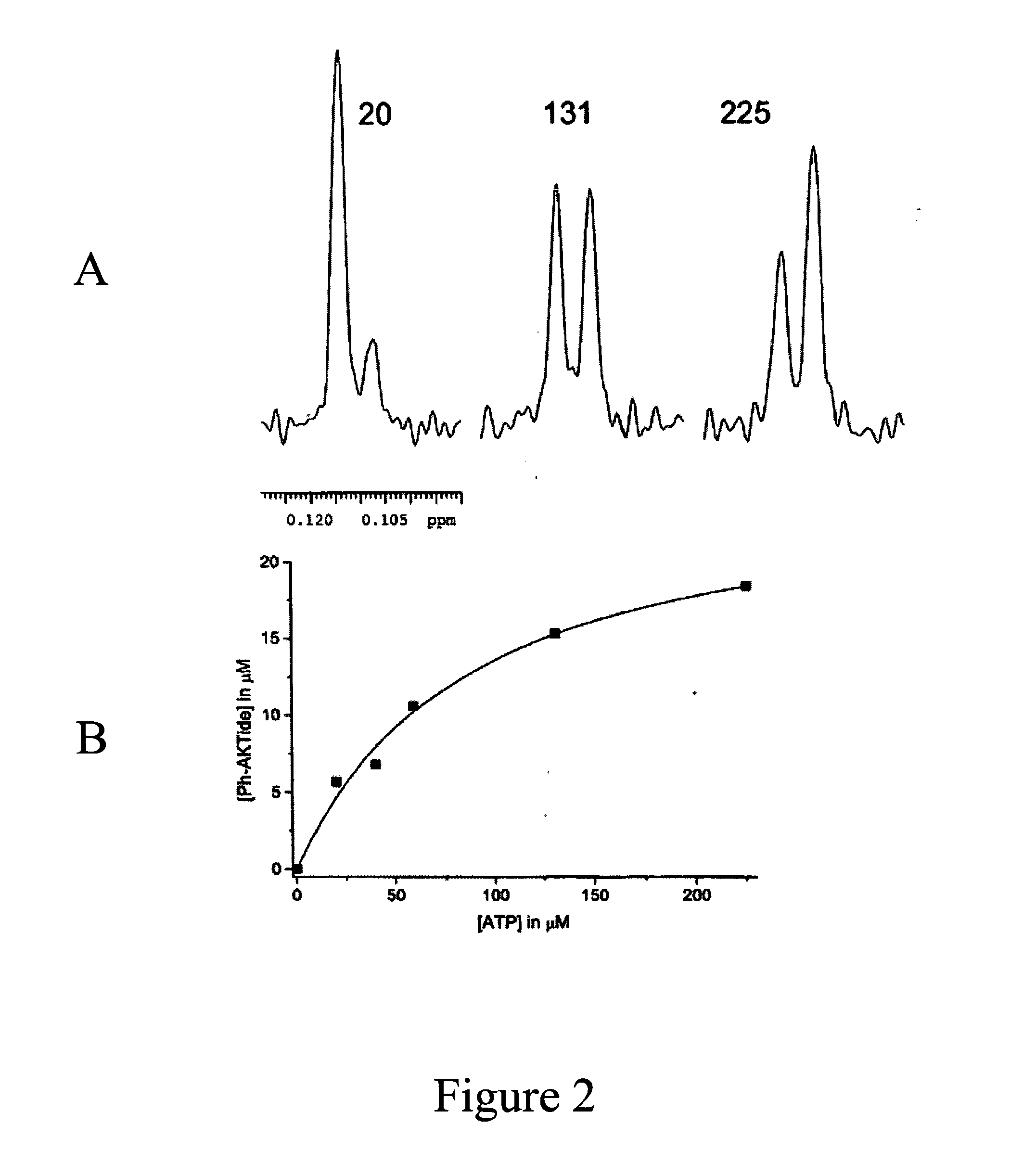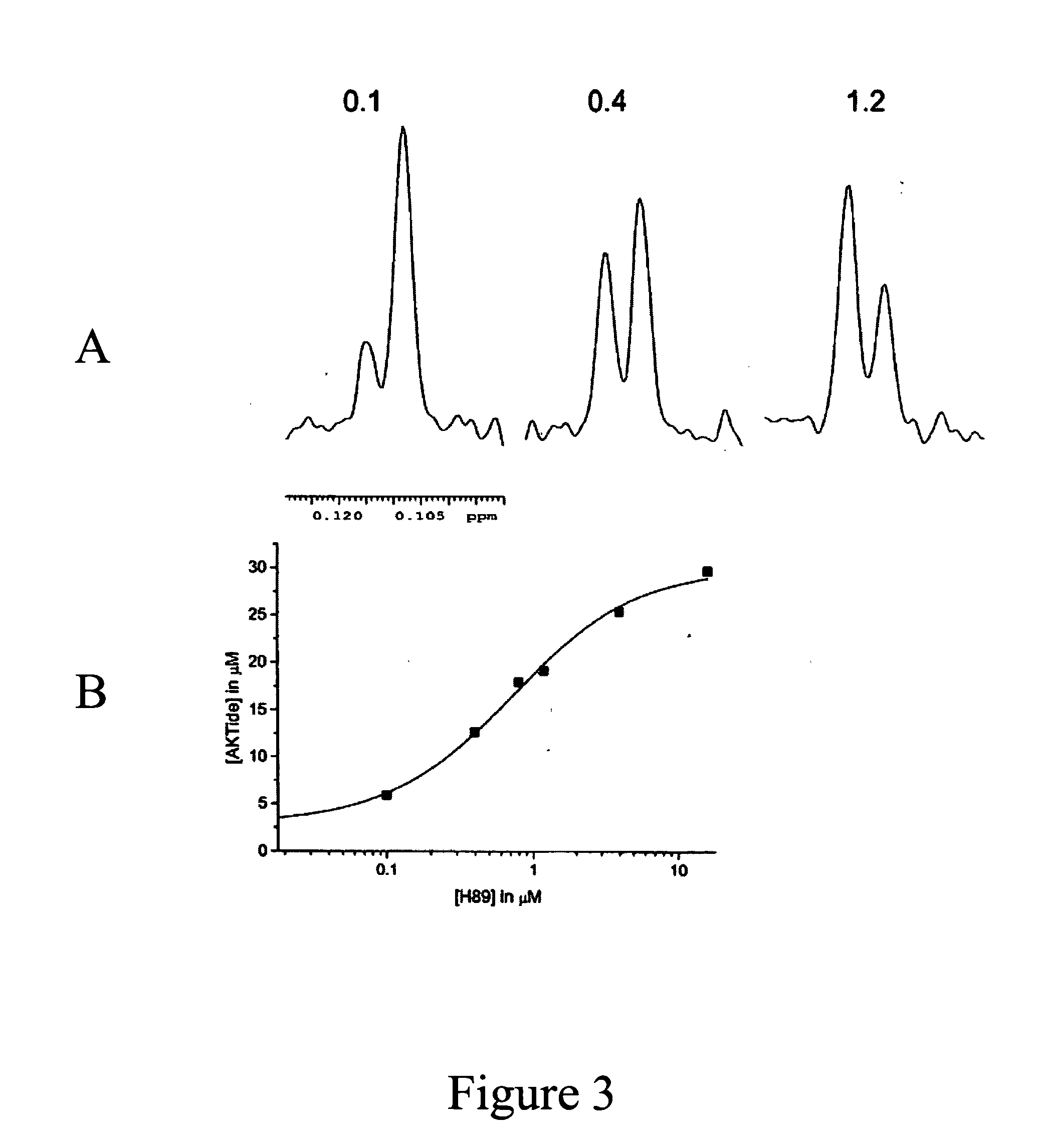Fluorine NMR spectroscopy for biochemical screening
a biochemical and fluorine nmr technology, applied in the direction of biological testing, material testing goods, biochemical apparatus and processes, etc., can solve the problems of limited application, large number of hits, and low sensitivity limit of nmr to enzymatic reactions with very high substrate concentrations
- Summary
- Abstract
- Description
- Claims
- Application Information
AI Technical Summary
Benefits of technology
Problems solved by technology
Method used
Image
Examples
example 1
[0029] Materials and Methods
[0030] WtAKT1 recombinant protein were produced by infection of sf21 insect cells with baculovirus coding for the full length protein fused to GST at the N-terminus. The cells were treated with okadaic acid for 4 hours prior to harvesting. This treatment, by inhibiting the cellular phosphatases, increased the total phosphorylation level of the protein leading to the phosphorylation of the two sites critical for AKT activity, threonine 308 in the activation loop and serine 473 in the C terminal hydrophobic motif. Lysis, purification, and removal of the GST tag were performed by following standard procedures. Trypsin, purchased from Roche Molecular Biochemical (Cat. No. 1418025), was dissolved in 1% acetic acid solution at a final stock solution concentration of 8.33 μM.
[0031] The serine / threonine p21-activated kinase PAK4 was expressed as a GST fusion protein in Escherichia coli and purified to homogeneity after removal of the GST tag.
[0032] All the com...
PUM
| Property | Measurement | Unit |
|---|---|---|
| pH | aaaaa | aaaaa |
| repetition time | aaaaa | aaaaa |
| volume | aaaaa | aaaaa |
Abstract
Description
Claims
Application Information
 Login to View More
Login to View More - R&D
- Intellectual Property
- Life Sciences
- Materials
- Tech Scout
- Unparalleled Data Quality
- Higher Quality Content
- 60% Fewer Hallucinations
Browse by: Latest US Patents, China's latest patents, Technical Efficacy Thesaurus, Application Domain, Technology Topic, Popular Technical Reports.
© 2025 PatSnap. All rights reserved.Legal|Privacy policy|Modern Slavery Act Transparency Statement|Sitemap|About US| Contact US: help@patsnap.com



